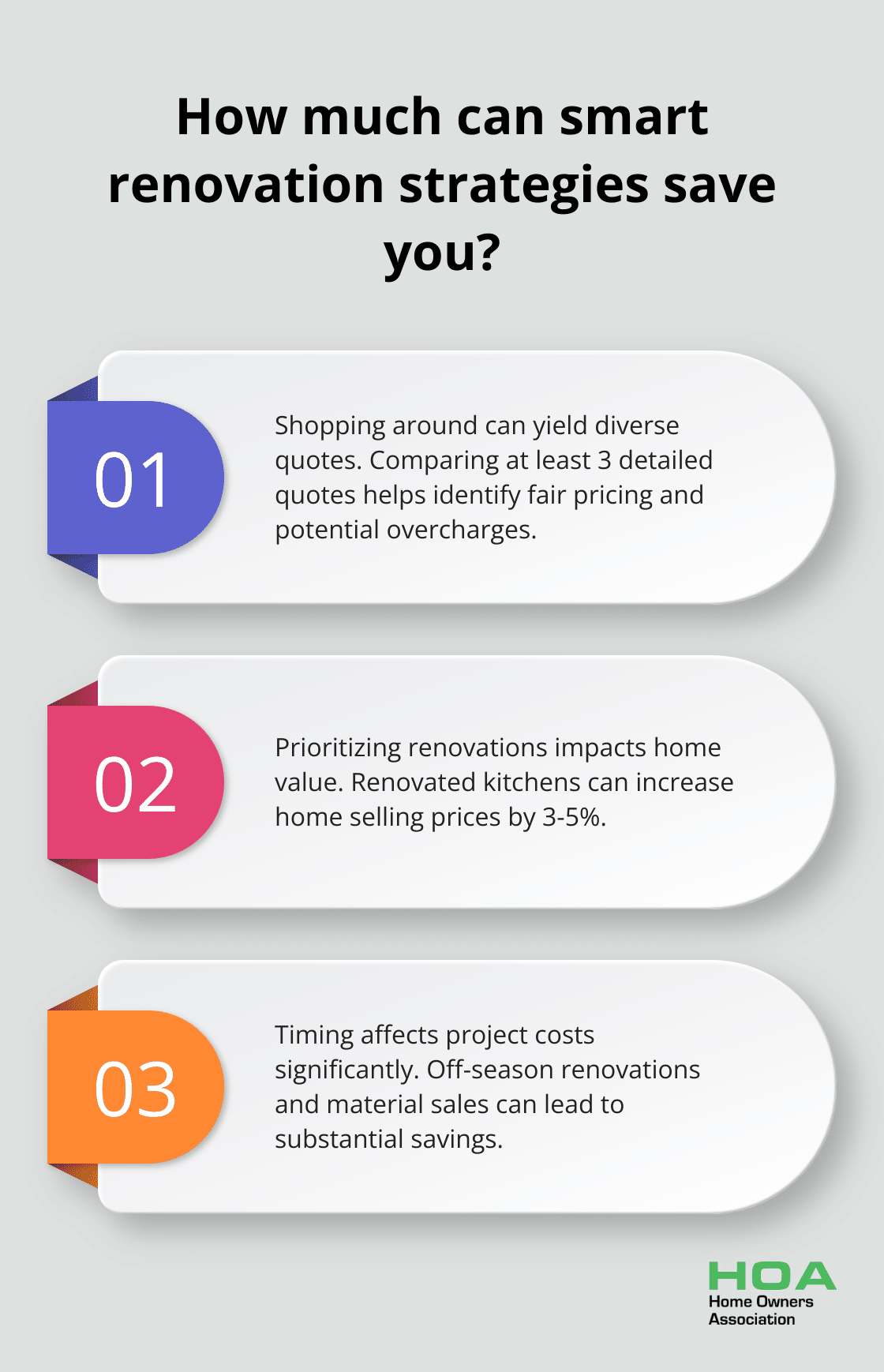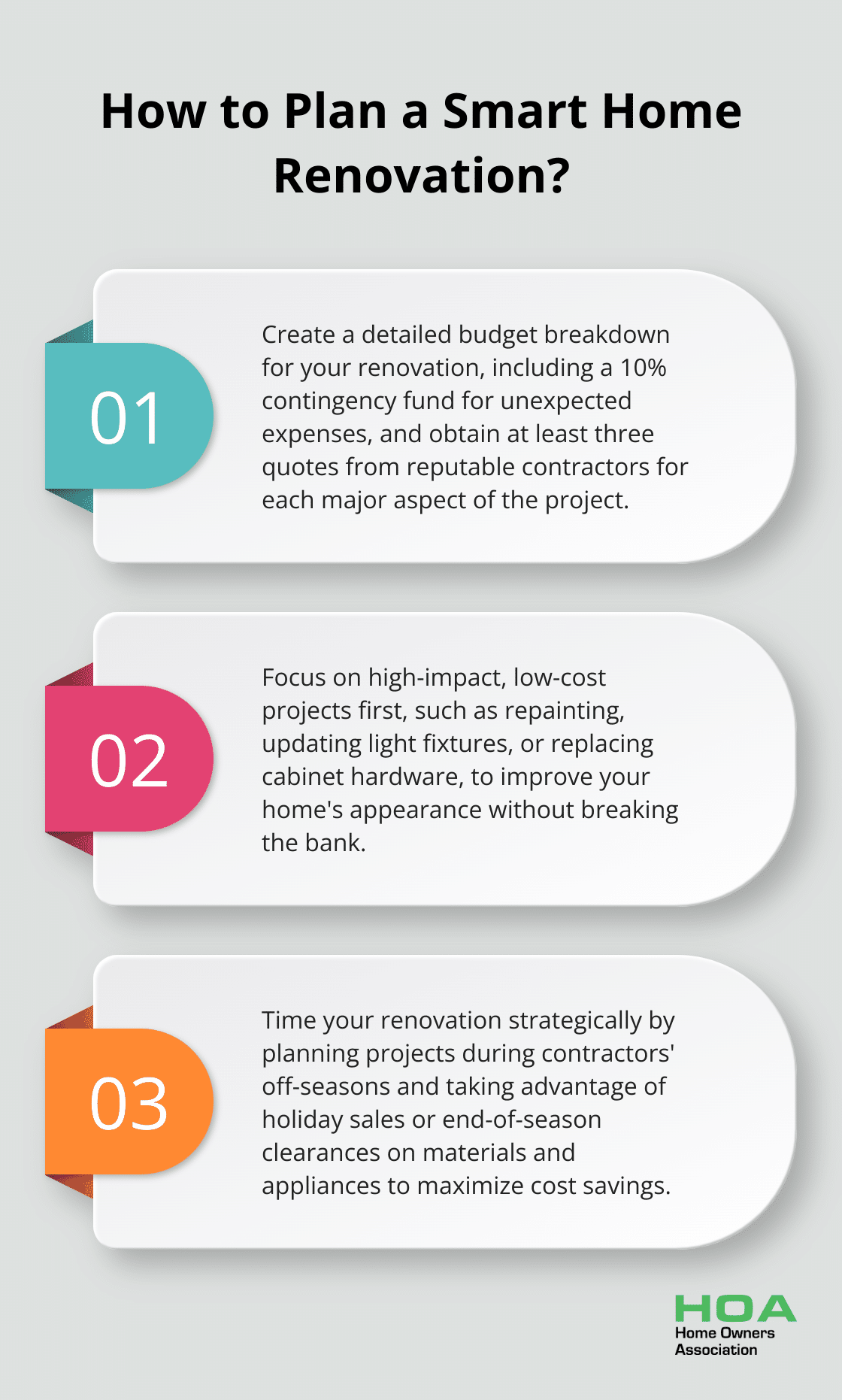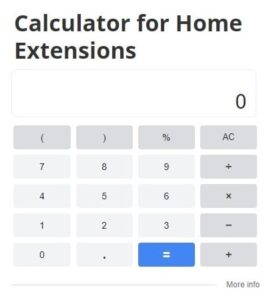
At Home Owners Association, we understand that financing a home renovation can be a daunting task. Many homeowners dream of upgrading their living spaces but struggle with how to finance a home renovation project.
This guide will explore various financing options, budgeting strategies, and cost-saving tips to help you turn your renovation dreams into reality. Whether you’re planning a minor update or a major overhaul, we’ll provide you with the knowledge to make informed decisions about your home improvement project.
Financing Options for Your Renovation
Tapping into Home Equity
Home equity loans and lines of credit (HELOCs) offer popular choices for homeowners with significant equity. These options typically provide lower interest rates compared to personal loans or credit cards. With a home equity loan, you receive a lump sum, while a HELOC provides a revolving credit line. The average loan size for owner-occupier dwellings reached $666,000 in December 2024, which indicates a growing trend in homeowners who leverage their property’s value.
Exploring Cash-Out Refinancing
Cash-out refinancing replaces your existing mortgage with a new, larger loan and allows you to pocket the difference. This option can attract homeowners if current interest rates fall below their original mortgage rate. However, you must consider the long-term implications, as you’ll extend your loan term and potentially pay more interest over time.
Personal Loans and Credit Cards
For smaller renovation projects, personal loans or credit cards might suit your needs. These options don’t require your home as collateral but typically come with higher interest rates. In Australia, the number of investor loans increased by 36% in Queensland between August 2023 and August 2024, followed by a 32.4% jump in investment lending.
Government-Backed Renovation Loans
Some government-backed programs can help finance your renovation. For instance, the Australian HomeBuilder grant supports substantial renovations for eligible owner-occupiers, subject to specific criteria. While these programs can offer attractive terms, they often come with strict requirements and may have limited availability.
Combining Financing Options
You can successfully use a combination of these financing options to fund your projects. We advise you to carefully assess each option’s terms, interest rates, and repayment schedules. Consider consulting with a financial advisor to determine the best strategy for your specific situation.

The right financing choice can make all the difference in turning your renovation dreams into reality while maintaining financial stability. Now that we’ve explored various financing options, let’s move on to determining your budget and project scope to ensure your renovation aligns with your financial goals.
How Much Will Your Renovation Cost?
Assessing Your Financial Landscape
Before you plan your renovation, take a hard look at your current financial situation. Review your income, expenses, and savings. The average Australian owner-occupier is borrowing $666,000 to buy their homes. This figure indicates that many homeowners leverage significant amounts for property-related expenses (including renovations).

Consider how much you can realistically afford to spend on your renovation without jeopardizing your financial stability. Factor in your current mortgage payments, living expenses, and any other financial obligations. It’s smart to maintain an emergency fund separate from your renovation budget.
Crunching the Numbers
You must estimate renovation costs accurately to avoid budget blowouts. Start by breaking down your project into specific tasks and research the average costs in your area. For example, a kitchen renovation in Sydney might cost significantly more than a similar project in a regional area.
Obtain detailed quotes from at least three reputable contractors for each major aspect of your renovation. This will give you a realistic range of costs and help you identify any outliers. Don’t forget to factor in the cost of materials, which can vary widely depending on quality and availability.
Expecting the Unexpected
One of the most common pitfalls in renovation budgeting is the failure to account for unexpected expenses. Set aside 5-10% of your total budget as a contingency fund. This buffer can cover unforeseen issues like structural problems, asbestos removal, or sudden price increases in materials.
Older homes often hide surprises behind walls and under floors. A thorough pre-renovation inspection can help identify potential issues early, allowing you to budget more accurately.
Investing in Long-Term Value
When you plan your renovation, consider the long-term value it will add to your home. Recent market trends show that kitchen and bathroom renovations typically offer the highest return on investment. However, the value added can vary depending on your location and the current state of the property market.
Think about energy-efficient upgrades that can save you money in the long run. For instance, installing solar panels or improving insulation might have a higher upfront cost but can lead to significant savings on energy bills over time.
With a solid financial foundation in place, you can move forward confidently to the next phase of your renovation journey: managing your renovation costs effectively.
Smart Ways to Cut Renovation Costs
Shop Around for the Best Deals
Obtain at least three detailed quotes for each major aspect of your renovation. This approach gives you a realistic price range and helps you identify any outliers that might overcharge or cut corners.

Don’t focus solely on the bottom line when comparing quotes. Examine the breakdown of costs, the quality of materials proposed, and the contractor’s timeline. Paying a bit more upfront for a reputable contractor can save you money in the long run by avoiding costly mistakes or delays.
Prioritize Your Renovation Wisely
Not all renovations add equal value to your home. Focus on projects that will give you the best return on investment. According to recent data, homes with renovated kitchens sell for about 3%-5% more than homes with outdated kitchens.
If your budget is tight, tackle high-impact, low-cost projects first. A fresh coat of paint, updated light fixtures, or new cabinet hardware can dramatically improve the look of a room without breaking the bank.
Time Your Project Strategically
The timing of your renovation can significantly impact costs. Many contractors offer discounts during their off-seasons, typically winter months for outdoor projects. For indoor renovations, you might find better deals in late summer or early fall when demand starts to slow down.
Plan your project well in advance to take advantage of sales on materials and appliances. Many retailers offer significant discounts during holiday sales events or end-of-season clearances.
Balance DIY and Professional Work
While we always recommend hiring professionals for complex tasks (like electrical work or structural changes), you can tackle many aspects of a renovation yourself to save money. Simple tasks like painting, installing baseboards, or even laying tile can be done by homeowners with some basic skills and the right tools.
Be realistic about your abilities. Attempting DIY work beyond your skill level can lead to costly mistakes that require professional intervention to fix. If you’re unsure, consult with a professional or take advantage of expert advice (such as that available through Home Owners Association).
To ensure you’re making informed decisions about your renovation budget, it’s crucial to calculate your home renovation costs accurately. This will help you prioritize projects and avoid overspending.
Final Thoughts
Home renovation projects excite and challenge homeowners. We at Home Owners Association know that financing a home renovation requires careful planning. Homeowners can explore home equity loans, cash-out refinancing, personal loans, and government-backed programs to find the best fit for their needs and financial situation.

Smart budgeting and cost management lead to successful renovations. Homeowners should assess their finances, estimate costs accurately, and include a buffer for unexpected expenses. They can maximize their investment by prioritizing high-return projects, considering energy-efficient upgrades, and timing renovations for seasonal discounts.
We encourage homeowners to approach their renovation with confidence and thorough preparation. The right financing strategy, careful budgeting, and smart cost-saving measures can transform living spaces while maintaining financial stability. For personalized guidance and exclusive benefits tailored to the Melbourne market, join the Home Owners Association.





